The imposition of kinesiology tape on the thoracic area
Stabilization of thoracic spine
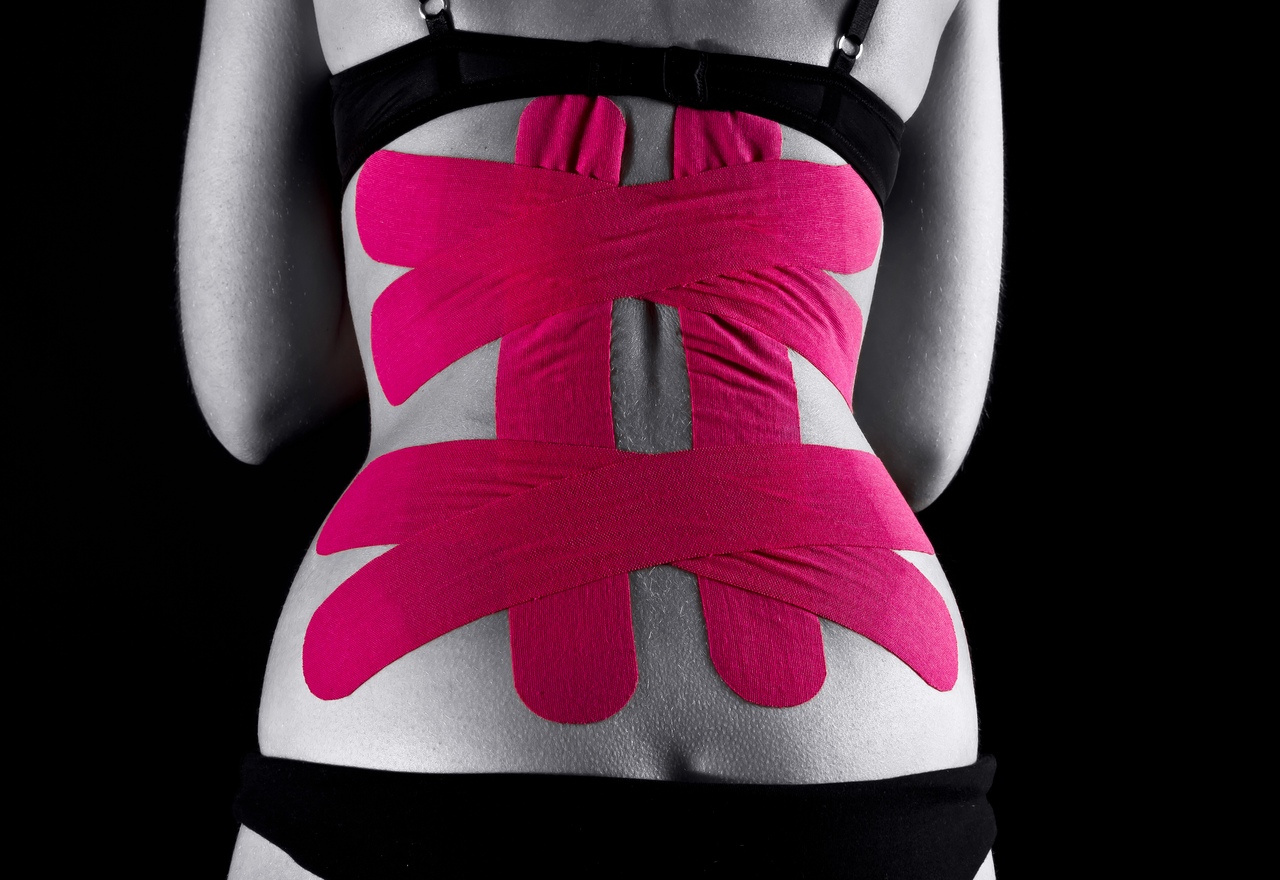
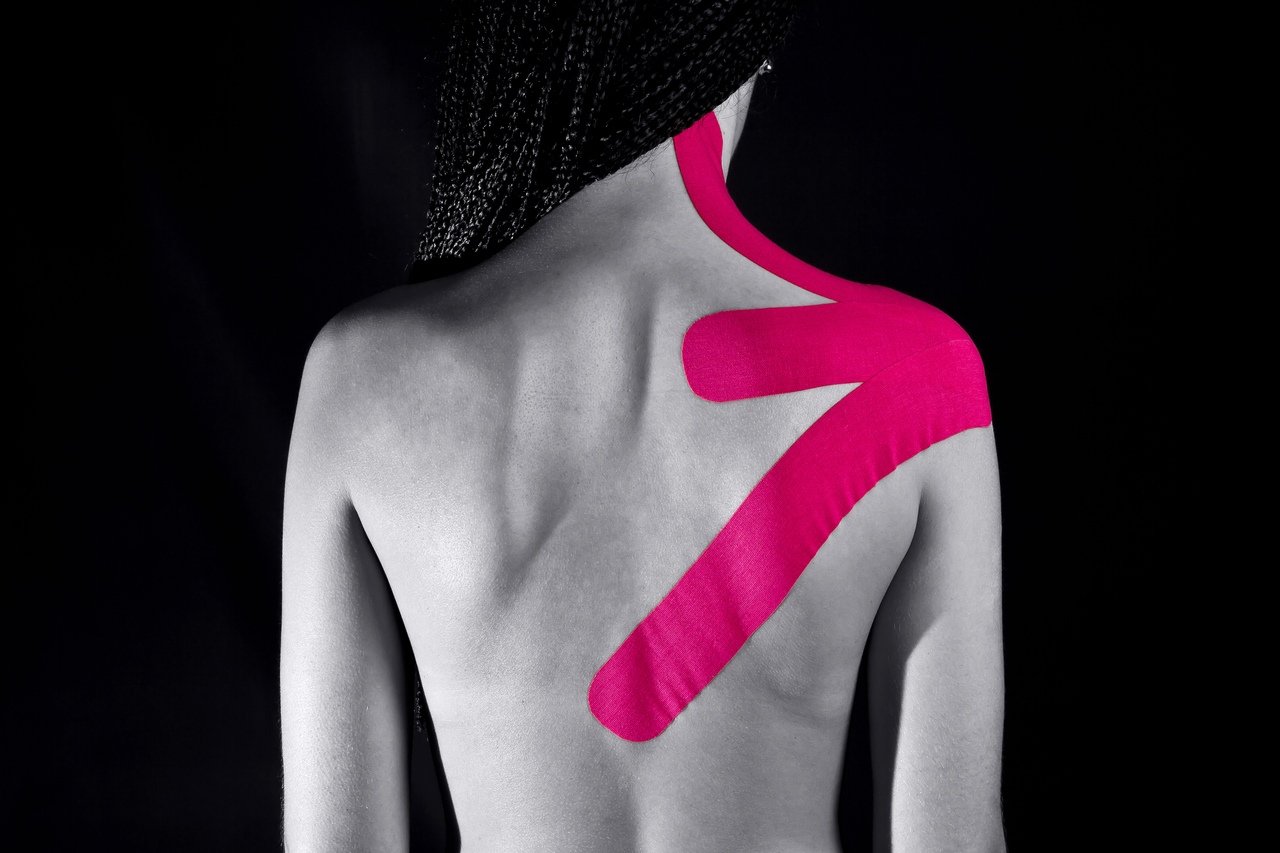
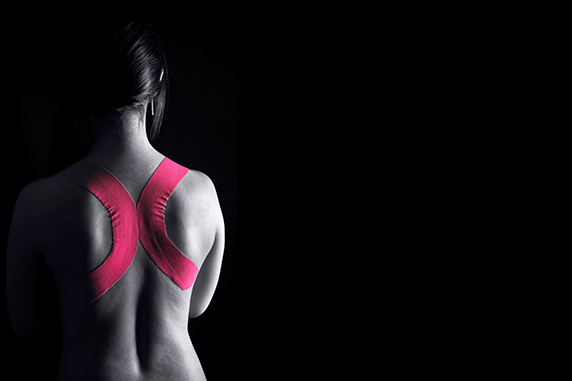
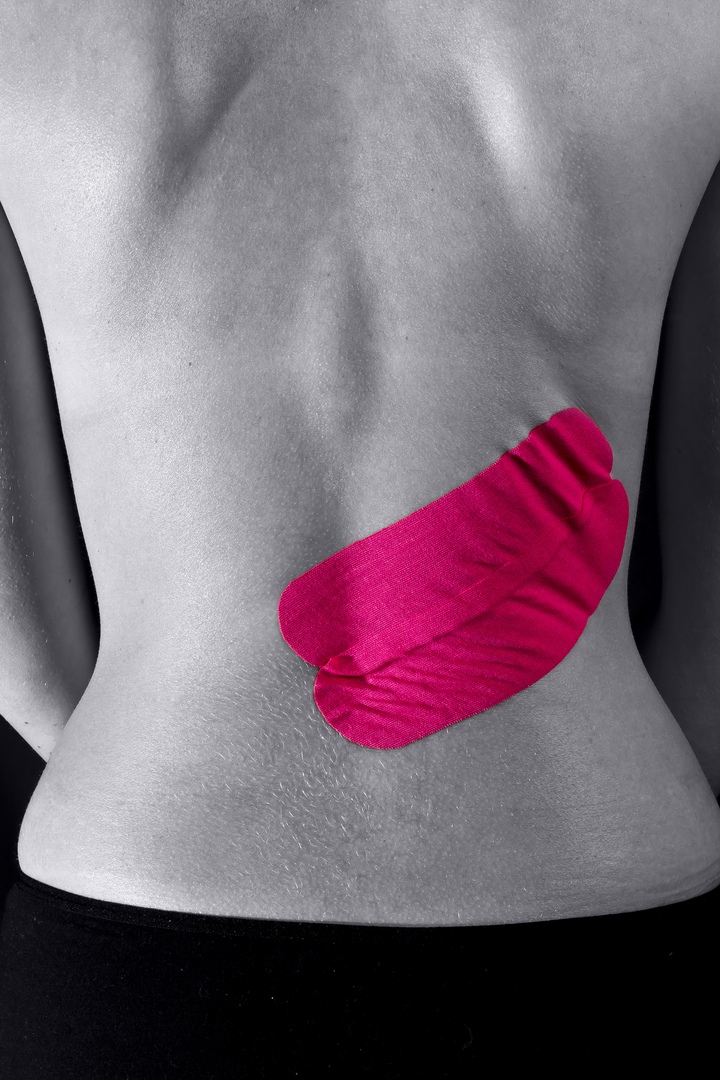
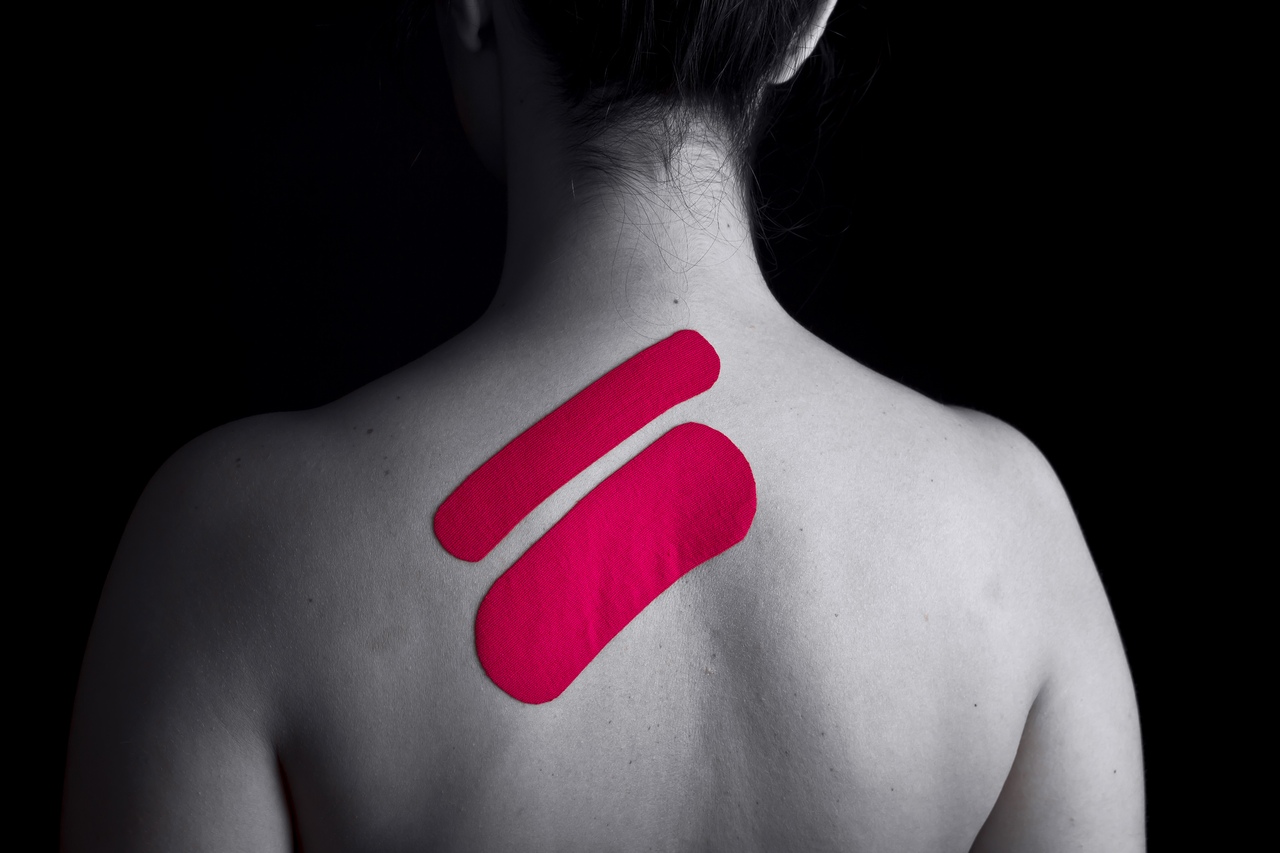
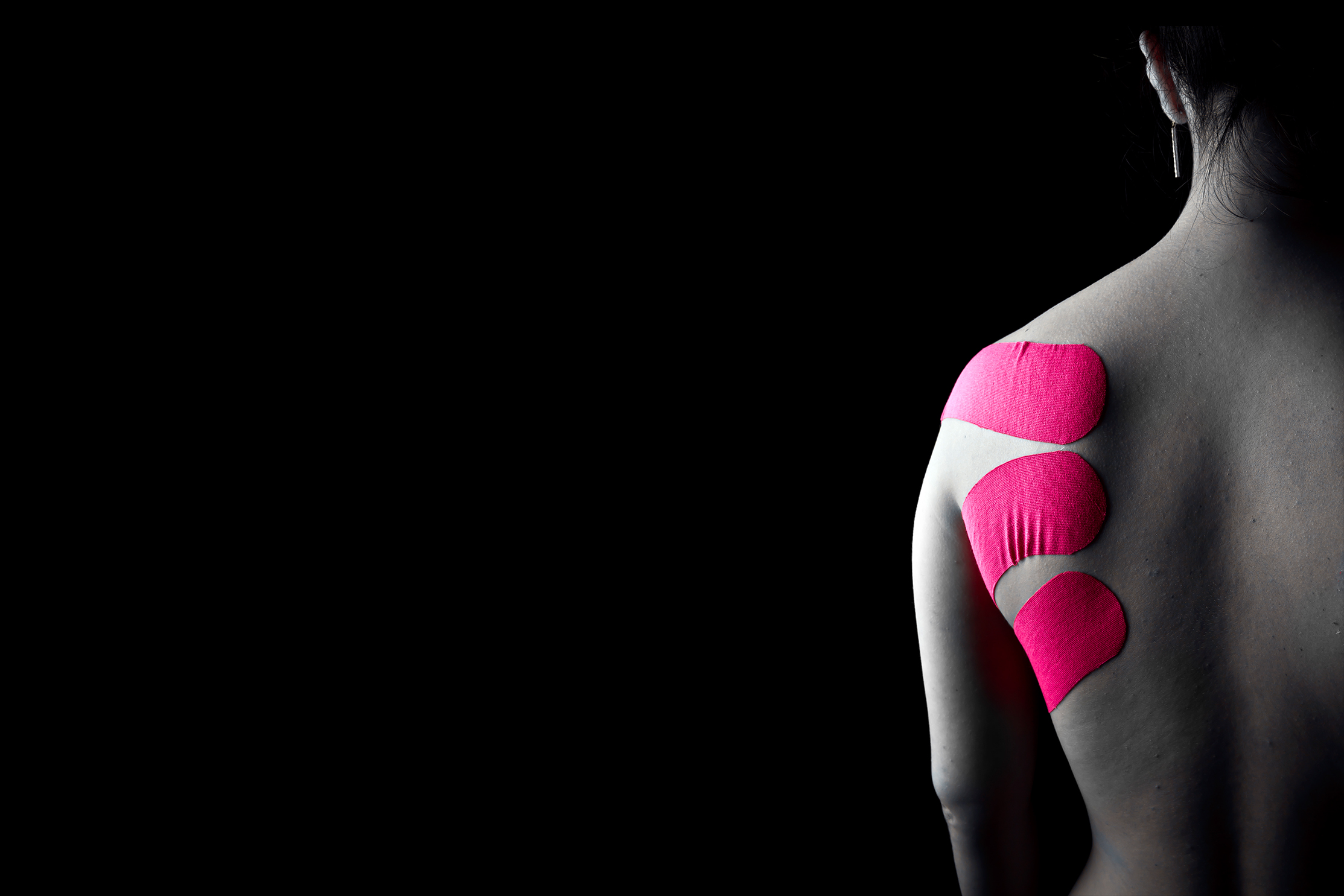

Indications: pain in the thoracic spine, intervertebral hernia, intervertebral protrusion, rehabilitation after surgery, pain syndrome in post-operation period without the need for rigid fixation.
1. Measure and cut two tapes 35 cm long and four equal tapes 25 cm long.
2. The patient bends his/her body to the front from standing position.
3. Apply the bases of the first two tapes 35 cm long in the region of L5-S1 without tension. Then apply the tapes with a 15 % tension in parallel to spinous processes of vertebra. Apply the tape anchors without tension.
4. Apply the third and the fourth tapes using ligament method like a criss-cross with crossing in the lumbar region.
5. 4. Apply the fifth and sixth tapes using ligament method like a criss-cross with crossing in the region of maximal discomfort in the thoracic region.
Trapezius muscle
Trapezius muscle

Indications: Correction of posture, trigger points, hypertonic muscles
1. This method requires three I-tapes: two approximately 15 cm long, and one — 30 cm.
2. Apply the base of the first tape without tension on acromion. Ask the patient to lower his/her shoulder down and bend the head towards the opposite shoulder. Then apply the tape with a 15% tension towards the nuchal line.
3. Apply the base of the second tape without tension on acromion over the first one. Ask the patient to lower his/her shoulder down, turn the head to the opposite side, and lower the chin down to the axillary cavity. Then apply the tape with a 15 % tension towards C7–Th2.
4. Apply the base of the third tape without tension also on acromion over the first and second ones. Then apply the tape with a 15 % tension towards Th12.
Difficult breathing
Difficult breathing

Indications: Chronic obstructive pulmonary disease, asthma, allergic rhinitis
1. For this application, we need two I-tapes or one X-tape. Two I-tapes were used in this method. Apply both I-tapes in the region of posterior surface of the chest.
2. Ask the patient for a maximal bending in the thoracic segment and taking his/her shoulders down. Apply the centre of each I-tape on the spinous process in the region of Th6-Th8.
3. Apply the upper part of I-tapes along the scapula, and the lower part is applied in the region of lower scapular angle wit a 15 % tension.
Serratus posterior inferior muscle
Serratus posterior inferior muscle

Indications: Correction of posture, hypertonic muscles
1. This method requires two I-tapes approximately 10 cm long, depending on anatomic features of the patient.
2. It should be noted that the tape should be applied on a maximally stretched muscle.
3. Apply the base of the first tape in the region of 9th-12th ribs, and then apply the tape with a 15 % tension towards spinous processes of Th11–L2.
4. Apply the base of the second tape directly below the first one, and then apply the tape with a 15 % tension towards spinous processes of vertebra.
Serratus posterior superior muscle
Serratus posterior superior muscle

Indications: Correction of posture, trigger points, hypertonic muscles
1. This method requires two I-tapes approximately 10 cm long, depending on anatomic features of the patient.
2. It should be noted that the tape should be applied on a maximally stretched muscle.
3. Apply the base of the first tape in the region of upper part of medial margin of scapula, then apply the tape with a 15 % tension towards C6–Th4.
4. Apply the base of the second tape directly below the first one, and then apply the tape with a 15 % tension towards spinous processes of vertebra.
Serratus anterior muscle
Serratus anterior muscle

Indications: Hypertonic muscle, scapulothoracic instability, scapulohumeral periarthritis
1. This method requires three I-tapes of 15-18 cm long, depending on anatomic features of the patient.
2. It should be noted that the tape should be applied on a maximally stretched muscle.
3. Apply the base of the first tape in the region of crest of lesser tubercle of humerus without tension, then apply the tape with a 15 % tension towards the upper part of medial margin of scapula.
4. Apply the base of the second tape in the region of axillary cavity, then apply the tape with a 15 % tension towards the middle part of medial margin of scapula.
5. Apply the base of the third tape in the region of points of muscular insertion near the lateral part of ribs, then apply the tape with a 15 % tension to the lower angle of scapula.
March 2020
April 2020
May 2020
 Shopping cart (0)
Shopping cart (0)
